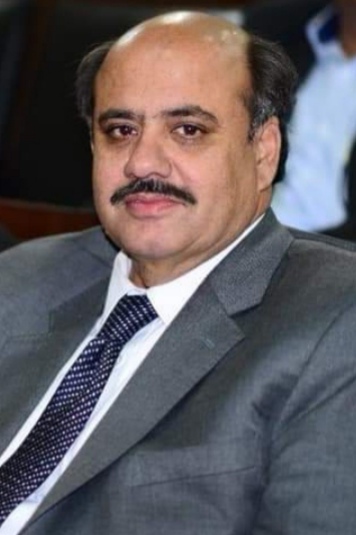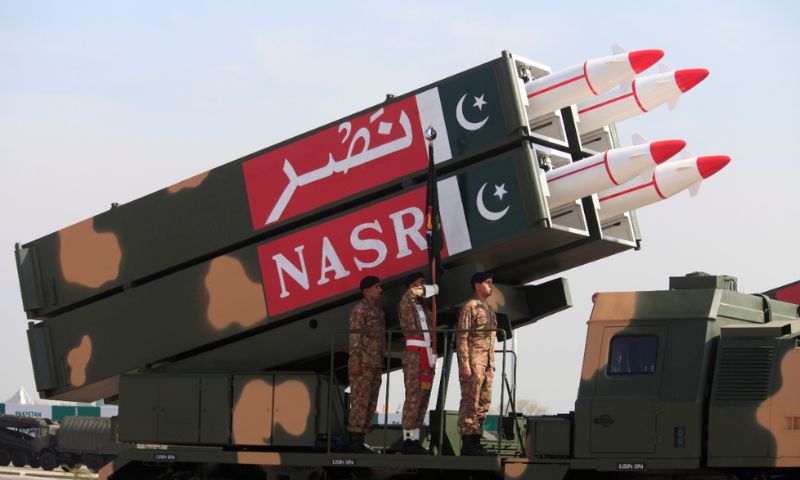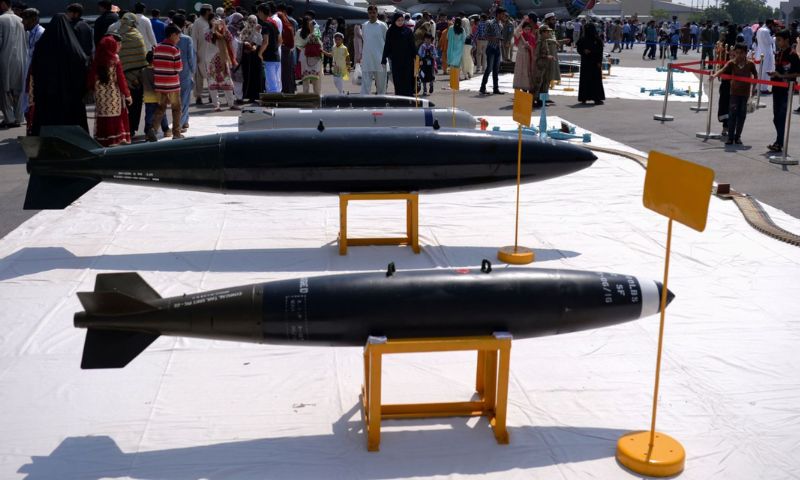By Dr. Zafar Nawaz Jaspal
The nuclear arms race among the great powers fast-tracked the missiles race between India and Pakistan. Both states have already developed, tested, and operationalized short and long-range ballistic and cruise missiles. They can deploy and operationalize nuclear-capable missiles in all four dimensions: land, sea, air, and submerged sea surfaces. Despite having various series of missiles and categories of nuclear warheads, the question remains whether Pakistan has an effective strategy to address the challenge posed by India’s hypersonic missiles and missile defense program. Moreover, how does Islamabad respond to the fast-expiring international arms control regime?
The hypersonic missiles are tempting for nations pursuing first-strike counterforce and decapitation capabilities. A hypersonic missile travels five times faster than the speed of sound, generating a speed of 1.06 km per second. India has been seeking hypersonic missiles—the hypersonic cruise missile and the hypervelocity-gliding projectile—to acquire counterforce capability against Pakistan.
The Indian strategic community is convinced that ballistic missile defense (BMD) systems effectively neutralize Pakistan’s missile strikes. Ironically, it has failed to realize that the operability of BMD against geographically contiguous nuclear-armed rivals—Pakistan and China—is debatable. Yet, they are advocating the development of BMD systems.
The Indian missile bureaucracy had claimed the success of a few tests of its missile defense systems. However, the strategic analysts questioned India’s BMD’s credibility due to its backward geospatial intelligence and lack of high-speed missile interceptors. Nevertheless, it is expected that India could resolve these shortcomings due to the generous transfer of sophisticated military technologies by the United States. For instance, the Americans agreed to assist India in emerging technologies. Under the U.S.-India initiative on Critical and Emerging Technology (ICET), Washington helps India in artificial intelligence (A.I.), quantum technologies, 5G/6G, biotech, and semiconductors and space. These technologies contribute significantly to modernizing India’s missile systems.
Geopolitical dynamics, including the Americans and Russians restoring their testing sites to test their new generation of nuclear weapons, alarm about the vertical proliferation of nuclear weapons. The United States exit from the 1972 Anti-Ballistic Missile Treaty in June 2002, the 1987 Intermediate-Range Nuclear Forces (INF) Treaty in 2019, the JACPOA in 2018, and the Russian Federation’s suspension of a New Start Treaty in 2022, and Moscow’s de-ratification of the Comprehensive Nuclear-Test-Ban Treaty indicate the collapse of nuclear arms control era matured during the second quarter of the twentieth century.
The American strategic pundits concluded that the Pentagon needed nuclear capability to deter the twin threats from China and Russia simultaneously and recommended the Biden administration to expand nuclear forces. Thus, it has modernized the nuclear arsenal. For instance, new nuclear gravity bombs, named B61-13 and B61-12, were developed and added to the nuclear stockpile. The modernization of the American nuclear arsenal would compel Russia and China to revise their nuclear doctrines and advance their nuclear war-fighting capabilities. These developments could intensify the nuclear and missile arms race between India and Pakistan.
The United Nations Secretary-General António Guterres warned on August 5, 2023, “The drums of nuclear war are beating once again; mistrust and division are on the rise.” On October 30, 2023, Russia’s minister of defense, Sergei Shoigu, opined at a defense forum in Beijing that the United States is fueling global tensions, threatening a military conflict between nuclear powers. The Israeli Heritage Minister Amichai Eliyahu recommended the use of atomic weapons against Gaza to punish Hamas on November 5, 2023. Notably, it is the first proper admission by a senior Israeli official that Israel possesses nuclear weapons, which alarms about the unleashing of nuclear weapons proliferation in the Middle East and North Africa.
The optimistic news for nuclear nonproliferation is that on November 12, Beijing and Washington held talks on nuclear arms control ahead of the summit between U.S. President Joe Biden and Chinese President Xi Jinping in San Francisco, United States. Reportedly, the talks broadly covered arms control and nonproliferation.
The Washington and Moscow modernization of nuclear weapons has a domino effect on all the nuclear weapon states. India seems to be in a better position due to its allies’ generous transfer of missile technologies and gears, especially the U.S., Israel, and Russia. Despite external technological assistance, India’s Brahmos (supersonic missile) originating from Sirsa, Haryana, crashed into Mian Channu, Khanewal District, Punjab, Pakistan, on March 9, 2023. India officially acknowledged it had accidentally fired a missile into Pakistan due to a “technical malfunction.” It raised serious concerns about technical faults and safety operating procedures of India’s missile program.
The Pakistani Foreign Affairs Ministry expressed concern about the incident, calling it an unprovoked violation of its airspace that could have endangered passenger flights and civilian lives. Whether it was deliberate or misfired, it was very alarming for regional security. Though the crisis was averted due to the responsible cum restrained behavior of Islamabad, it has not terminated the missiles’ advancement in the region.
On October 18, 2023, Pakistan retested second time a medium-range, surface-to-surface ballistic missile—Ababeel—to revalidate the design, technical parameters, and performance evaluation of different sub-systems. It is a crucial engineering milestone for Pakistan’s nuclear triad vehicles because it uses multiple independently targetable re-entry vehicles (MIRV) to carry multiple nuclear warheads. The test demonstrated Islamabad’s improved capability to penetrate India’s missile defenses.
The encouraging development was that the 193-nation Assembly’s First Committee (Disarmament and International Security) adopted Pakistan’s four annual disarmament-related resolutions to strengthen regional and international peace and security on November 2, 2023. Admittedly, the resolutions dealing with regional disarmament and conventional arms control have little practical outcome. For instance, India voted against conventional arms control because it is equipping its armed forces with state-of-the-art imported weapons. However, the confidence-building measures (CBMs) in the regional and sub-regional context make sense. The nuclear-armed states, including India and Pakistan, could appreciate CBMs to avoid the accidental, inadvertent, and unauthorized use of nuclear weapons.
Significantly, as the general elections approach in India and Pakistan, both sides are increasing their inventories of short-to-long-range missile systems. This proliferation could intensify complex security dilemmas, particularly conventional asymmetries and lowering nuclear threshold risks. Besides, the bellicose rhetoric of the BJP against Pakistan to muster the support of Hindutva and ultranationalists support in the April-May 2024 elections further quashed the probability of CBMs and also alarms about the replica of the February 2019 dangerous military conflict between India and Pakistan.
To conclude, India and Pakistan are at the cusp of a missile race in the transforming global geostrategic environment. Thus, Pakistan needs a critical review of India’s strike and defensive capabilities, incorporating currently fielded capabilities and those expected to be fielded soon to solidify its defensive defense.


























